Search
CLOSEStructural Biology and Chemistry
Dr. Evangelia Chrysina
Chrysina Group specializes on Structural Biology with emphasis on Biomedical and Biotechnological applications. The Group performs functional and structural studies of proteins of pharmaceutical and biotechnological interest in the thematic areas of Life Sciences, Bioinformatics, Natural Sciences, Chemical Engineering and Technology.
Mission
The Chrysina group mission is to demystify the 3D protein space by Integrative Structural Biology and Structural Bioinformatics for Biomedical and Biotechnological Applications.
Vision
The vision of the group is to address pressing societal challenges by applying integrated approaches.
Chrysina group passion for Structural Biology coupled with the engineering background of the PI is the driving force to continuously explore, enrich and push boundaries in the aims set. With the aim to address pressing societal challenges by applying integrated approaches, Structural Biology has unveiled the need for and the dynamic of intersectoral cooperation between biologists, chemists, engineers and computer scientists. It has significantly contributed to understanding protein function at cellular level, supported by the improvements in the infrastructures. Within this field one can witness the power of genuine integration of disciplines with the aim of delivering solutions. Thus, the full breadth of biological processes may be captured, encompassing the full chain, from data, to structure, to function, converting information to knowledge. To keep up with the rapid advances in this field, structural biology now gives emphasis on systems and has developed a cross-talk with molecular, cellular and chemical biology, as well as biophysics and metabolic engineering to shed light on protein structure-function relationships that dictate and regulate the metabolic processes.
Targets and strategic plan for the future
The Chrysina group at the Institute of Chemical Biology (ICB), NHRF envisages to be a point of reference for Integrative Structural Biology in South-east Europe and the Mediterranean area welcoming young scientists, collaborators and users of Instruct-EL hub, who wish to explore the “three-dimensional space”, whether they have prior knowledge in the field of structural biology or not. Instruct-EL hub, is one of the core nodes of the national distributed research infrastructure on structural biology Inspired-RIs, which is coordinated by ED Chrysina and NHRF.

More information on Inspired-RIs and the services provided are available at https://www.inspired-ris.gr, https://inspired-ris.catalogue.athenarc.gr
Core values
The core values to achieve Chrysina group vision are: Excellence, a founding value that has allowed the Group to achieve its goals until present, building a strong collaborative international network, increasing awareness of the Group on disruptive and groundbreaking research in Europe and worldwide and bringing it at the forefront of a new research and innovation ecosystem. Free circulation of ideas and teamwork to sustain excellence and the leading role of the Group, building on the experience gained; equitable treatment to all group members, an essential component, thus securing the trust that has been built across the members; transparency in all rules and procedures, including recruitment and career development based on merit, professionalism, gender equality and diversity & inclusion; effectiveness in implementing the ICB-NHRF decisions; continuous improvement in promoting the Group and ICB-NHRF to the wider community worldwide, by raising funds to achieve the objectives set and encouraging the professional development of key members to meet the emerging needs; they may benefit from different mobility and transnational access schemes either as visiting scientist in renown structural biology labs, or as users of Large European RIs. To capitalize on the existing and new competitive advantages of Chrysina Group, and fulfil the objectives set, driven by the aforementioned core values, four strategic pillars are selected: Group members/users (are encouraged to get trained and develop skills in the latest advances of structural biology and benefit from available transnational access schemes to RIs); synergies (capacity building providing incentives to groups/private sector from Balkans and SE-Europe), operational structure (create task forces to approach users, build capacity in technology transfer) and finances (coordinate and/or participate in “Horizon Europe” funding opportunities; seek for additional funding sources (e.g. from patients or disease associations)). Dr Chrysina remains committed to her cause: to bring structural biology at the forefront of research and help all people recognize the role it plays in understanding the mechanisms of life.
Main scientific directions

Structural Biology studies currently are performed by X-ray protein crystallography and in the future by other techniques such as SAXS and cryo-EM focusing on:
a. enzymes directed implicated in glycogen metabolism for the development of new antidiabetic agents using the structure-based drug design approach
b. biomass degrading enzymes
Enzymes directed implicated in glycogen metabolism for the development of new antidiabetic agents using the structure-based drug design approach
This approach has been applied on glycogen phosphorylase (GP), the first enzyme for which control by reversible phosphorylation was established, that catalyses the glycogen degradation to glucose-1-phosphate, which is then released as glucose in the bloodstream. GP is validated target for treating type 2 diabetes. The long-standing collaboration with synthetic chemists in Greece and abroad has resulted in the investigation of >300 compounds that have been examined by kinetic and structural studies using X-ray protein crystallography.
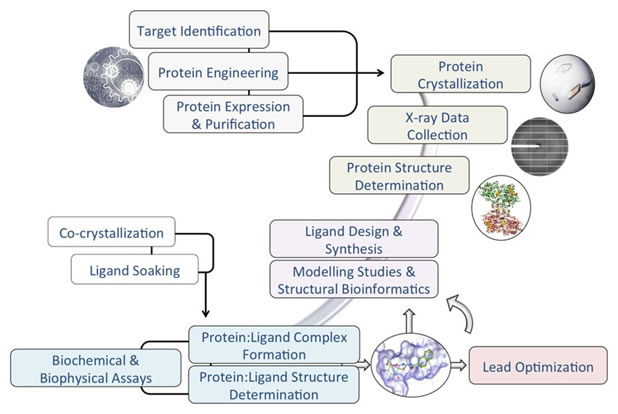
A fruitful cooperation with Gimisis group, Dept. of Chemistry at NKUA, has resulted in GP inhibitors in the low nM range, some of which have fluorescent properties and may be further used for cell-based assays. Indeed, our paper discusses the binding mode of a glucose-based molecular rotor, inhibitor of GP, as a probe of cellular enzymatic function.
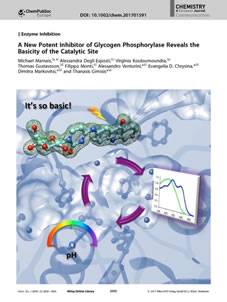
PDB ID: 5MEM

PDB ID: 7Q5I
Biomass degrading enzymes
Biomass degrading enzymes of biotechnological interest are of key importance for industrial processes. Our work so far involves biochemical and structural characterization of hemicellulases (xylanases, glucuronoyl and feruloyl esterases) using European large-scale facilities such as SRS at PETRA III/DESY, EMBL-Hamburg Unit. With the aim to explain the thermal stability of these enzymes their 3D structure has been determined at high resolution. Selected published work includes the 3D crystal structures of a novel glucuronoyl esterase from S. thermophile and a new feruloyl esterase from F. oxysporum (in collab. with Christakopoulos and Topakas groups, School of Chemical Engineering, NTUA). Dr Chrysina also has an ongoing collaboration with Vorgias and Hatzinikolaou groups, Dept. of Biology, NKUA on more biocatalysts of this type as well as Skretas group, ICB-NHRF.
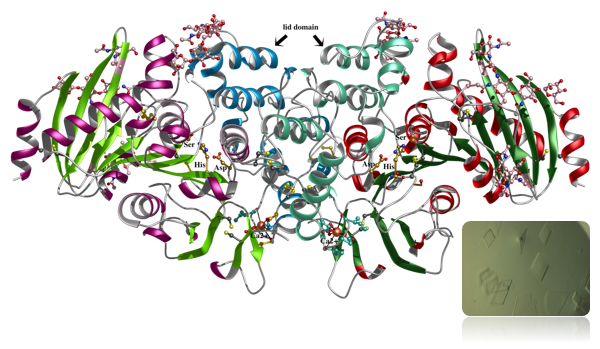
Structural Biology has unveiled the need for and the dynamic of intersectoral cooperation between biologists, chemists, engineers and computer scientists has become unveiled. Within this field one can witness the power of genuine integration of disciplines with the aim of delivering solutions such as new drugs, vaccines, etc. Thus, the full breadth of biological processes may be captured, encompassing the full chain, from data, to structure, to function, converting information to knowledge.
Chrysina group pursues this aim by
- identifying structural determinants that dictate ligand binding and enzymic function employing geometric algorithms and structural bioinformatics (in collab. with Emiris group, Dept. of Informatics/NTUA);
- reconstructing the metabolic network that connects these proteins with emphasis on their interactions (in collab. with Klapa group, FORTH-ICEHT)
- fully characterize the proteins of interest by biophysical methods and investigate protein:polymer interactions for potential biotechnological applications (in collab. with Pispas group, TPCI-NHRF.
Chrysina group works on the design of new methods and process development with emphasis on:
- Protein crystallization
- Proteins as Biomaterials, in collaboration with experts in Biopolymers
- Computational Mechanics for advanced simulations
International Scientific Collaborations
Collaborations with academic and research organizations in Greece
Research organizations
- National Hellenic Research Foundation (NHRF)
- National Centre for Scientific Research (NCSRD) – «Demokritos»
- Foundation for Technology and Research (FORTH)
- «ATHENA» Research Centre
- Hellenic Pasteur Institute
Academic organizations
- National & Kapodistrian University of Athens (NKUA)
- National Technical University of Athens (NTUA)
- University of Patras
- University of Thessaly
- University of Ioannina
- University of Crete
- “Demokritus” University of Thrace
- Aristotle University of Thessaloniki
Collaborations with academic and research organizations abroad
- ΝΚΙ, Amsterdam, The Netherlands
- European Molecular Biology Laboratory- Hamburg, Germany
- CNRS- Centre Nationnal de la Recherche Scientifique, IRAMIS, LIDYL, France
- University of Manchester, UK
- University of Debrecen, Hungary
- Université Claude-Bernard Lyon 1, France
- University of Oxford, UK
Research Funding (2008 – present)
- iNEXT-Discovery, Structural biology for translational research and discovery project no. 871037, Horizon 2020 program of the EC (coordinator: Prof. A. Perrakis, PI for NHRF ED Chrysina, Total Budget: €9,987,756.5, Budget for NHRF: €18,000) (2021-2024) (https://inext-discovery.eu)
- “INSPIRED-The National Research Infrastructures on Integrated Structural Biology, Drug Screening Efforts and Drug target functional characterization” (MIS 5002550). Action “Reinforcement of the Research and Innovation Infrastructure”, funded by the Operational Programme “Competitiveness, Entrepreneurship & Innovation” (National Strategic Reference Framework-NSRF 2014-2020) & co-financed by Greece & the EU (Coordinator: Dr ED Chrysina, Total budget €3,818,820.00, Budget for Instruct-EL hub/NHRF: €540,000.85) (3/9/2018-30/09/2022) (https://www.inspired-ris.gr)
- Structural optimization of thermophilic multienzymic nanostructures with applications biorefineries (contract no.: 2019-050-0503-18289) (Funding for a Post-doctoral researcher, M-D. Charavgi, MSc, PhD in colalboration with Dr D. Hatzinikolaou, Univ. of Athens, State Scholarships Foundation, total budget: €26,400.00 (01.02.2020 – 31.01.2022)
- Structural studies of enzymes of biotechnological interest with emphasis on β-hydrolases implicated in plant biomass degradation (contract no.: 2018-050-0502-15915) (Funding for a PhD student, A. Sotiropoulou, MSc, under the joint supervision of Dr D. Hatzinikolaou, Univ. of Athens and Dr E.D. Chrysina, IBMCB-NHRF, State Scholarships Foundation, total budget: €29,408.4 (24.04.2018 – 23.04.2021)
- “Releasing the full potential of Instruct to expand and consolidate infrastructure services for integrated structural life science research: Instruct-ULTRA”. Proposal No. 731005, Horizon2020-INFRADEV-2016-2017 (Development and long-term sustainability of new pan-European research infrastructures, Coordination and support action INFRADEV-03-2016-2017) (Coordinator: Prof. Dave Stuart/Prof. Ray Owens, PI for Greece: Dr ED Chrysina, Total Budget: €395,000, Budget for Instruct-EL/NHRF: €100,000) (https://instruct-ultra.eu/network/instruct-ultra/home)
- Targeted therapeutic approaches against degenerative diseases, with emphasis on cancer and aging-STHENOS II’’ (01.11/2017-30.11.2020) National Strategic Reference Framework-NSRF, Greek General Secretariat for R&T (GSRT) call ‘KRIPIS’ (Coordinator: Dr Α. Pintzas, Director of IBMCB/NHRF €1,500,000.00, ED Chrysina budget: €26,714.00)
- «Instruct-Ellas, National consortium». Transnational Access to large scale synchrotron radiation facilities in the frame of “BioStruct-X” April 2012-2015 (coordinator: Dr. E.D. Chrysina) (users’ visits to Synchrotron Radiation Source-EU Large scale facilities with accommodation and travel expenses)
- «REN-ATHENS» Researchers’ Night: meeting science and your next door scientist, Contract no. 633335 Horizon2020 (Coordinator: Dr G. Fanourakis/ NCSR-Demokritos, PI for NHRF, ED Chrysina, budget for NHRF €11.200)
- «Advancement of Research Capability for the Development of New Functional Compounds – ARCADE». FP7-REGPOT-2009-1-245866 Coordination and Support actions (Support) (2008-2013) (Coordinator: Dr. B.Steele/IOPC-NHRF) (2.966.510 €) (01.12.2009-30.05.2013) (ED Chrysina budget: €180,000)
- «Synthesis, kinetic and crystallographic studies of potential inhibitors targetin glycogen phosphorylase », (2010-2013) HERAKLEITOS ΙΙ (in cooperation with Assoc. Prof. Th. Gimisis (PI) and Prof. D. Kyriakidis, former president of NHRF)
- «Molecular, structural and catalytic studies of novel biocatalysts (hemicelluloses) implicated in plant biomass degradation», (2010-2013) HERAKLEITOS ΙΙ (in cooperation with Prof. P. Christakopoulos/NTUA (PI) and Prof. D. Kyriakidis, former president of NHRF)
- Funding for access to large scale facilities for performing experimental work, EMBL/DESY Hamburg unit for use of the synchrotron radiation source (2011) (P.I. Dr E.D. Chrysina).
- Funding for access to large scale facilities for performing experimental work (Trans–national Access award), Protein Production Platform P–CUBE for optimizing human brain glycogen phosphorylase expression (2011) (P.I. Dr E.D. Chrysina).
- Funding for access to large scale facilities for performing experimental work, EMBL/DESY Hamburg unit for use of the synchrotron radiation source (2009-2010) (P.I. Dr E.D. Chrysina).
- Funding for access to large scale facilities, SRS-Daresbury Laboratory for use of the synchrotron radiation source on “Determining the structure of a new alkaline xylanase III (F/10) from Fusarium Oxysporum” (P.I. Dr E.D. Chrysina, 2007).
Research Funding (2001 – 2008)
(in co-operation N.G. Oikonomakos, head of the Structural Biology & Chemistry Group & Director of the Institute of Organic and Pharmaceutical Chemistry (IOPC/NHRF)
- «European consolidation and promotion of research capacity in the area of structure-based drug discovery – EUROSTRUCT». FP7-REGPOT-2008–230146 Coordination and Support actions (Support) (2008-2011) (Coordinator: N.G Oikonomakos/ D.D. Leonidas, 2008-2011/S.E. Zographos, 2011-2012) (€986.000).
- «Drug design at the molecular level using approximate and exact computational methods- DRUGDESI» Transfer of Knowledge (ToK) Marie Curie Program, MTKD-CT-2006-042776 (2007-2011) (Coordinator: N.G. Oikonomakos/ E.D. Chrysina Sept. 2008-11) (€186.396).
- «A European Research Training Site for the Design and Synthesis of Novel Neuroprotective and Hypoglycaemic Agents through a Multi-disciplinary approach», EURODESY, EU Marie Curie Early Stage Training (EST) network, MEST-CT-020575 (Coordinator: Dr N.G. Oikonomakos, with the participation of all research groups of IOPC/NHRF and Molecular Endocrinology group o IBRB/NHRF (2006-2010), €984,122.
- Structure-based design of new hypoglycaemic drugs, Κοινό Διακρατικό Πρόγραμμα μεταξύ Ελλάδος-Ουγγαρίας (Joined Research and Technology Project between Greece-Hungary)/ GSRT PI Dr N.G. Oikonomakos/NHRF and Prof. Lászlo Somsák/Department of Organic Chemistry, University of Debrecen, Debrecen, Hungary (2004-2006) (€11.740)
- Discovery of small-molecule inhibitors of glycogen phosphorylase, as potential hypoglycaemic agents, guided by structure-based drug design and in silico virtual ligand screening, Scientific and Technological cooperation between Greece and USA/GSRT, to Dr. N.G. Oikonomakos/NHRF and Prof. Alexander D. MacKerell, Jr., Computer-Aided Drug Design Center, School of Pharmacy, Univ. of Maryland, Baltimore, MD, USA) (2004-2006) (€60.000).
- Crystallisation and preliminary crystallographic studies on human phosphoenolpyruvate carboxykinase, a molecular target for types 2 diabetes therapy. Supported by Pfizer Inc. (2003-2005) (PI. Dr. N.G. Oikonomakos/NHRF) (€8.000).
- Exploitation of the scientific results obtained through a spin off company dedicated to structure-based drug design. 02 PRAXE3/GSRT (PI Dr N.G. Oikonomakos/NHRF (2003-2004) (€44.000).
- Glycogen phosphorylase as molecular target for the development of new potent hypoglycaemic drugs, PENED 2001/GSRT (in collaboration with Prof. C. Sakarellos/Dept. of Chemistry, Univ. of Ioannina, Ioannina, Greece, coordinator Dr N.G. Oikonomakos/NHRF, Business partner Aventis Pharma Deutsland GmbH) (2002-2005), €128,187.82
- Calmodulin regulated protein kinases: molecular and cellular functions of five prototypic members from the human genome by a multidisciplinary approach. HPRN-CT-2002-00252/EU Research Network (Coordinator Matthias Wilmanns, EMBL, Hamburg Outstation; participants Louise Johnson, Univ. of Oxford, Adi Kimchi, Weizmann Inst. of Science, Mathias Gautel, King’s College London, UK, N.G. Oikonomakos (PI), NHRF, Mauno Vihinen, Univ. of Tampere) (2002-2006) (€200.000).
- Inhibitors of glycogen phosphorylase and phosphorylase kinase as potential antidiabetic drugs, ENTER/GSRT, 2002-2004 to Dr E.D. Chrysina (Reintegrated researcher from abroad) and Dr N.G. Oikonomakos/NHRF (Host). Business partner AstraZeneca UK Ltd), Total Budget € 73.250,00.
- European Structural Biology Forum (ESBF)-to a European infrastructure cooperation network/EU (2001-2005). An Infrastructure Cooperation Network (coordinated by Prof. Rolf Hilgenfeld, P.I. Dr. N.G. Oikonomakos/NHRF) with 10 European Research Infrastructures, 8 Users, and Bruker GmbH, Karlsruhe, Germany, Travel grants (€11.200)
- Glycogen phosphorylase inhibitors as potential antidiabetic drugs. A Royal Society UK– Joint Project Grant to Prof. Dame L.N. Johnson, FRS/Laboratory of Molecular Biophysics, University of Oxford and Dr. N.G. Oikonomakos/NHRF. (2001-2003) (£12,000).
- Molecular recognition and rational design of potential drugs, Joint Research and Technology Project between Greece-Cyprus/GSRT to Dr. N.G. Oikonomakos/NHRF and Prof. G. Archontis/University of Cyprus, Cyprus (2001-2003), € 8,804.11
- Crystallisation studies and crystallographic studies of glycogen phosphorylase. Supported by AstraZeneca, UK (PI Dr N.G. Oikonomakos, Researcher Dr ED Chrysina) (2001-2003) £50,000.
- Crystallographic studies of glycogen phosphorylase-inhibitor complexes. Supported by Aventis Pharma Deutschland GmbH (Frankfurt am Main, Germany) (PI Dr N.G. Oikonomakos /NHRF) (2001) (DM15.000).
- From enzyme-inhibitor complex crystal structure to the design of potential hypoglycaemic drugs for the treatment of non-insulin-dependent diabetes mellitus, Joined Research and Technology Project between Greece-Hungary/GSRT to Dr N.G. Oikonomakos/NHRF and Prof. L. Somsak/Department of Medicinal Chemistry, University of Debrecen, Debrecen, Hungary (1999-2001) (€11.738,81)
- Structure–Function relation of muscle allosteric proteins: molecular recognition of small molecules by proteins and structure-based drug design. PENED 1999/GSRT. (PI N.G. Oikonomakos / NHRF), (1999-2001) (€13.2061,63)
- Structure/function relationships in enzymes of glycogen metabolism, Wellcome Trust Biomedical Research Collaboration Grant (with the Laboratory of Molecular Biophysics, Univ. of Oxford) (1997-2001) (£12,000).
Other research grants
- «Instruct-EL: a National Research Infrastructure on Integrated Structural biology» involving 14 academic & research organizations across the country (P.I. Dr E.D. Chrysina).
- “Infrastructure for NMR, EM and X-ray crystallography for translational research, i-NEXT”. Proposal No. SEP-210169978, Horizon2020-INFRAIA-2014-2015 (Integrating and operating existing national and regional research infrastructures of European interest, Research and Innovation Action-RIA) (Coordinator: Prof. Rolf Boelens, ED Chrysina, member of the Greek partners from Univ. of Patras)
- «GPdia – A multidisciplinary investigation towards inhibitors of glycogen phosphorylase designed and evaluated as antidiabetic molecules» French Agence Nationale de la Recherche (ANR) (coordinator: Prof. Jean-Pierre Praly, Université Claude-Bernard Lyon 1).
- «Molecular, structural study study of novel biocatalysts (hemicelluloses) that were isolated με with the aid of bioinformatics tools» PEVE 2008 (P.I. Prof. P. Christakopoulos, NTUA).
Service provision to users of the facilities available at ICB/NHRF
- X-ray Diffraction Analyses and analyses of bioactive compounds (XRPD, XRD) for pharmaceutical companies, as services to external users (2016 – present) (Scientist in charge: Dr E.D. Chrysina)
Publications in peer-reviewed journals (*corresponding author)
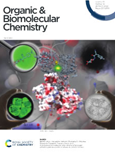


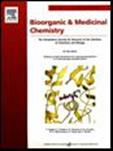
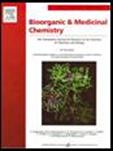


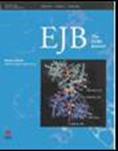
2022
- Minadakis, M-P., Mavreas, K.F., Neofytos, D.D., Paschou, M., Kogkaki A., Athanasiou, V., Mamais, M., Veclani, D., Iatrou, H., Venturini, A., *Chrysina, E.D., Papazafiri, P., Gimisis, T. (2022) A glucose-based molecular rotor inhibitor of glycogen phosphorylase as a probe of cellular enzymatic function. Org. Biomol. Chem. 20, 2407-2423 (IF2021-22 3.876) (Front Cover)
PDB ID: 7Q5I - Neophytos, D.D., Papagiannopoulos, A., *Chrysina, E.D., Pispas, S. (2022) Formation and physicochemical properties of Glycogen Phosphorylase in complex with a cationic polyelectrolyte Int. J. Biol. Macromol. 206 371-380 (IF2021 6.953)
2021
- Chontzopoulou, E., Papaemmanouil, C.D., Chatziathanasiadou, M.V., Kolokouris, D., Kiriakidi, S., Konstantinidi, A., Gerogianni, I., Tselios, T., Kostakis, I.K., Chrysina, E.D., Hadjipavlou-Litian, D., Tzeli, D., Tzakos, A.G., Mavromoustakos, T. (2021) Molecular investigation of artificial and natural sweeteners as potential anti-inflammatory agents. J. Biomol. Struct Dyn. 9, 1-13 (IF2020 3.392)
2020
- Dimarogona, M., Topakas, E., Christakopoulos, P. & *Chrysina, E. D. (2020) The crystal structure of a Fusarium oxysporum feruloyl esterase that belongs to the tannase family. FEBS Lett. 1873-3468.13776 (IF2020 6.750)
PDB ID: 5MEM - Zarafeta, D., Galanopoulou, A.P., Leni, M.E., Kaili, S.I., Chegkazi, M.S., Chrysina, E.D., Kolisis, F.N., Hatzinikolaou, D.G., Skretas, G. (2020) XynDZ5: A New Thermostable GH10 Xylanase. Front. Microbiol. 11, Article 545(IF2020 4.190)
- Mavreas, K.F., Neofytos, D.D., *Chrysina, E.D., Venturini, A., Gimisis, T. (2020) Synthesis, kinetic and conformational studies of 2-substituted-5-(β-D-glucopyranosyl)-pyrimidin-4-ones as potential inhibitors of glycogen phosphorylase. Molecules 25, Article 5463 (IF2020 3.010)
2019
- Maffeis, V., Mavreas, K., Monti, F., Mamais, M., Gustavsson, T., Chrysina, E.D., Markovitsi, D., Gimisis, T., Venturini, A. (2019) Multiscale time-resolved fluorescence study of a glycogen phosphorylase inhibitor combined with quantum chemistry calculations. Phys. Chem. Chem. Phys. 21, 7685-7696 (IF2019 3.43)
- Stathi, A., Mamais, M., Chrysina, E.D., Gimisis, T. (2019) Anomeric spironucleosides of β-D-glucopyranosyl uracil as potential inhibitors as glycogen phosphorylase. Molecules 24, 2327-2337 (IF2019 3.267)
- Chountoulesi M., Pippa N., Chrysostomou V., Pispas S., Chrysina E.D., Forys A., Otulakowski L., Trzebicka B. and Demetzos C. (2019) Stimuli-responsive lyotropic liquid crystalline nanosystems with incorporated poly(2-dimethylamino ethyl methacrylate)-β-poly(lauryl methacrylate) amphiphilic block copolymer. Polymers 11, 1400-1424 (IF2019 3.426)
2018
- Chountoulesi, M., Pippa, N., Pispas, S., Chrysina, E.D., Forys, A., Trzebicka, B., Demetzos, C. (2018). Cubic lyotropic liquid crystals as drug delivery carriers: Physicochemical and morphological studies. Int. J. Pharm. 550, 57-70 (IF2018 4.213)
2017
- Mamais, M., Esposti, A.D. Kouloumoundra, V., Gustavsson, T., Monti, F., Venturini, A., *Chrysina, E.D., Markovitsi, D., Gimisis, T. (2017). A New Potent Inhibitor of Glycogen Phosphorylase Reveals the Basicity of the Catalytic Site. Chemistry- A European Journal 23, 8800-8805 (IF2017 5.16) (Frontipiece)
PDB ID: 5MEM
2016
- Goyard, D. Kónya, B, Chajistamatiou, A.S., Chrysina, E.D., Leory, J., Balzarin, S., Tournier, M., Tousch, D., Petit, P., Duret, C., Maurel, P., Somsák, L., Docsa, T., Gergely, P., Praly, J.P., Azay-Milhau, J., Vidal, S. (2016) Glucose-derived spiro-isoxazolines are anti-hyperglycemic agents against type 2 diabetes through glycogen phosphorylase inhibition. Eur. J. Med. Chem. 108, 444-454. (IF2016 4.519)
- Louros, N.N., Chrysina, E.D., Baltatzis, G.E., Patsouris, E.S., Hamodrakas, S.J., Iconomidou, V.A. (2016) A common “aggregation-prone” interface possibly participates in the self-assembly of human zona pellucida proteins. FEBS Lett. 590, 619-630. (IF2016 3.9)
- Galal, S.A., Khattab, M., Andreadaki, F., *Chrysina, E.D., Praly, J.P., Ragab, F.A., El Diwani, H.I. (2016). Synthesis of (benzimidazol-2-yl)aniline derivatives as glycogen phosphorylase inhibitors. Biorg. Med. Chem. 24, 5423-5430 (IF2016 3.129)
- Zarafeta, D., Szabo, Z., Moschidi, D., Phan, H., Chrysina, E.D., Peng, Xu, Ingham, C.J., Kolisis, F.N. and Skretas, G. (2016). EstDZ3: a new esterolytic enzyme exhibiting remarkable thermostability. Front. Microbiol. 7, Article 1779 (IF2015 4.165)
- Zarafeta, D., Moschidi, D., Ladoukakis, E., Gavrilov, S., Chrysina, E.D., Chatziioannou, A., Kublanov, I., Skretas, G., Kolisis, F.N. (2016). Metagenomic mining for thermostable esterolytic enzymes uncovers a new family of bacterial esterases. Sci. Rep. 6-38886 1-16 (IF2016 4.62)
2015
- Mavrokefalos, N., Myrianthopoulos, V., Chajistamatiou, A.S., Chrysina, E.D., Mikros, E. (2015) Discovery of the glycogen phosphorylase-modulating activity of a resveratrol glucoside by using a virtual screening protocol optimized for solvation effect. Planta Med. 81, 507-516. (IF2015 2.152)
- Mamais, M., Kouloumoundra, V., Smyrli, E., Grammatopoulos, P., Chrysina, E.D., Gimisis, T. (2015) Synthesis of N4-aryl-β-D-glucopyranosylcytosines: a methodology study. Tetrahedron Lett. 56, 5549-5552 (IF2015 2.347)
2014
- Louros, N.N., Iconomidou, V.A., Tsiolaki, P.L., Chrysina, E.D., Baltatzis, G.E., Patsouris, E.S., Hamodrakas, S.J. (2014) An N-terminal natiuretic peptide (NT-proANP) ‘Aggregation-Prone’ segment involved in isolated atrial amyloidosis. FEBS Lett. 588, 52-57. (IF2014 3.169)
- Czifrák, K., Páhi, A., Deák, S., Kiss-Szikszai, A., Kövér, K.E., Docsa, T, Gergely, P., Alexacou, K-M., Papakonstantinou, M., Leonidas, D.D., Zographos, S.E., *Chrysina, E.D., Somsák, L. (2014) Glucopyranosylidene-spiro-iminothiazolidinone, a new bicyclic ring system: synthesis, derivatization, and evaluation for inhibition of glycogen phosphorylase by enzyme kinetic and crystallographic methods. Bioorg. Med. Chem. 22, 4028-4041. (IF2014 2.793)
- Goyard, D., Chajistamatiou, A.S., Sotiropoulou, A.I., *Chrysina, E.D., Praly, J-P., Vidal, S. (2014) Efficient atropodiastereoselective access to 5,5′-bis-1,2,3-triazoles: studies on 1-glucosylated 5-halogeno 1,2,3-triazoles and their 5-substituted derivatives as glycogen phosphorylase inhibitors. Chemistry-A European Journal 20, 5423-5432. (IF2014 5.731)
2013
- Charavgi, M., Dimarogona, M., Topakas, E., Christakopoulos, P., *Chrysina, E.D. (2013) The crystal structure of a novel glucuronoyl esterase from Myceliophthora thermophila gives new insights on its role as a potential biocatalyst. Acta Crystallogr. D69, 63-73. (IF2013 7.232)
PDB IDs: 4G4G, 4G4I, 4G4J
2012
- Azay-Milhau, J., Duret, C., Vidal, S., Goyard, D., Balzarin, S., Leroy, J., Tournier, M., Tousch, D., Ferrare, K., Maurel, P., Chrysina, E. D., Petit, P., Praly, J.P. (2012) A glycogen phosphorylase inhibitor developed as a potential antidiabetic compound, Fundamental & Clinical Pharmacology 26 S1, 94. (IF2012 1.78)
- Nagy, V., Felföldi, N., Kónya, B., Praly, J.-P., Docsa, T., Gergely, P., *Chrysina, E.D., Tiraidis, C., Kosmopoulou, M.N., Alexacou, K.-M., Konstantakaki, M., Leonidas, D.D., Zographos, S.E., Oikonomakos, N.G., Kozmon, S., Tvaroška,I., Somsák, L. (2012) N-(4-Substituted-benzoyl)-N’-(β-D-glucopyranosyl)ureas as inhibitors of glycogen phosphorylase: synthesis and evaluation by kinetic, crystallographic, and molecular modelling methods Bioorg. Med. Chem. 20, 1801-1816. (IF2012 2.903)
PDB IDs: 2QNB, 2QLM, 2QLN, 2QN3, 2QN7, 2QN8, 2QN9 - Dimarogona, M., Topakas, E., Christakopoulos, P., *Chrysina, E.D. (2012) The structure of a GH10 xylanase from Fusarium oxysporum reveals the presence of an extended loop on top of the catalytic cleft Acta Crystallogr. D68, 735-742. (IF2012 14.103)
PDB IDs: 3U7B - Iconomidou, V.A., Giannelou, P.K., Leontis, A., Chrysina, E.D., Hamodrakas, S.J. (2012) Identification of a novel amyloidogenic peptide in the sequence of the highly amyloidogenic Human Calcitonin J. Peptide Sci. 18, S1, S162. (IF2012 2.071)
- Feuillastre, S., Chajistamatiou, A.S., Potamitis, C., Zervou, M., Zoumpoulakis, P., *Chrysina, E.D., Praly, J-P., Vidal, S. (2012) C-glucosylated malonitrile as a key intermediate towards carbohydrate-based glycogen phosphorylase inhibitors Bioorg. Med. Chem., 20, 5592-5599. (IF2012 2.903)
- Goyard, D., Baron, M., Skourti, P.V., Chajistamatiou, A.S., Docsa, T., Gergely, P., *Chrysina, E.D., Praly, J.-P., Vidal., S. (2012) Synthesis of 1,2,3-triazoles from azido xylose and 5-thioxylose: Evaluation of the xylose scaffold for the design of potential glycogen phosphorylase inhibitors Carbohydrate Res. 364, 28-40. (IF2012 2.044)
2011
- Kun, S., Nagy, G.Z., Tóth, M, Czecze L., Van Nhien, A.N., Docsa, T., Gergely, P., Charavgi, M.D., Skourti, P.V., Chrysina, E.D., Patonay, T., Somsák, L. (2011) Synthesis of variously coupled conjugates of D-glucose, 1,3,4-oxadiazole, and 1,2,3-triazole for inhibition of glycogen phosphorylase. Carbohydrate Res. 346, 1427-1438. (IF2011 2.332)
- *Chrysina, E.D., Chajistamatiou, A., Chegkazi, M. (2011) From structure-based to knowledge-based drug design through x-ray protein crystallography: sketching glycogen phosphorylase binding sites. Curr. Med. Chem. 18, 2620-2629. (IF2011 4.94) Front Cover.
- Alexacou, K.-M., Zhang, Y.Z., Praly, J.-P., Zographos, S.E., Chrysina, E.D., Oikonomakos, N.G., Leonidas, D.D. (2011). Halogen-substituted (C-β-D-glucopyranosyl)-hydroquinone regioisomers: Synthesis, enzymatic evaluation and their binding to glycogen phosphorylase. Bioorg. Med. Chem. 19, 5125-5136. (IF2011 2.921)
PDB IDs: 3NP9, 3NP7, 2NPA, 3S0J
2010
- Zhong, S.J., Alexacou, K.M., Chara vgi, M.A., Tiraidis, C., Zographos, S.E., Leonidas, D.D, Chrysina, E.D., Oikonomakos, N.G., MacKerell, A.D. (2010). Glycogen phosphorylase inhibitor identification targeting the inhibitor binding site using virtual screening and experimental validation. Abstracts of Papers of the Amer. Chem. Soc., 240, 265-COMP
- Felfoldi, N., Toth, M., Chrysina, E.D., Charavgi, M.-D., Alexacou, K.-M., Somsak, L., (2010). Synthesis of new glycosyl biuret and urea derivatives as potential glycoenzyme inhibitors. Carbohydrate Res. 345, 208-213. (IF2010 2.22)
- Alexacou, K.M., Tenchiu Deleanu, A.C., Chrysina, E.D., Charavgi, M.D., Kostas, I.D., Zographos, S.E., Oikonomakos, N.G., Leonidas, D.D. (2010). The binding of β-D-glucopyranosyl-thiosemicarbazone derivatives to glycogen phosphorylase: A new class of inhibitors. Bioorg. Med. Chem. 18, 7911-7922. (IF2010 2.978)
PDB IDs: 3NC4, 3MRV, 3MT8, 3MT9, 3MRT, 3MT7, 3MRX, 3MS2, 3MS4, 3MS7, 3MQF, 3MTA, 3MTD, 3MTB, 3MSC, 3NP9, 3NP7, 2NPA, 3S0J - *Chrysina, E.D. The prototype of glycogen phosphorylase (2010) Mini Rev. Med. Chem. 10, 1093-1101. (IF2010 3.03)
2009
- *Chrysina, E.D., Bokor, E., Alexacou, K-M., Charavgi, M-D., Oikonomakos, G.N., Zographos, S.E., Leonidas, D.D., Oikonomakos, N.G., *Somsák, L. (2009). Amide-1,2,3-triazole bioisosterism: the glycogen phosphorylase case. Tetrahedron Asymmetry 20, 733-740. (IF2009 2.625)
PDB IDs: 3G2I, 3G2H, 3G2K, 3G2J, 3G2L, 3G2N - Benltifa, M., Hayes, J., Vidal., S. Gueyrard, D., Goekjian, P.G., *Praly, J-P, Kizilis, G., Tiraidis, C., Alexacou, K-M., *Chrysina, E.D., Zographos, S.E., Leonidas, D.D., Archontis, G., Oikonomakos, N.G. (2009). Glucose-based spiro-isoxazolines: A new family of potent glycogen phosphorylase inhibitors. Bioorg. Med. Chem. 17, 7368-7380. (IF2009 2.822)
PDB IDs: 2QRM, 2QRQ, 2QRP, 2QRH, 2QRG
2008
- Alexacou, K.M., Hayes, J.M., Tiraidis, C., Zographos, S.E., Leonidas, D.D., Chrysina, E.D., Archontis, G., Oikonomakos, N.G., Paul, J.V., Varghese, B., Loganathan, D. (2008). Crystallographic and computational studies on 4-phenyl-N-(b-D-glucopyranosyl)-1H-1,2, 3-triazole-1-acetamide, an inhibitor of glycogen phosphorylase: Comparison with a-D-glucose, N-acetyl-β-D-glucopyranosylamine and N-benzoyl-N’-β-D-glucopyranosyl urea binding. Proteins: Structure, Function, and Bioinformatics 71, 1307-23. (IF2008 3.419)
PDB IDs: 2PYD, 2PYI - Dimarogona, M., Topakas, E., Christakopoulos, P., *Chrysina, E.D. (2008). Structural studies of a new alkaline xylanase (FoXyn10a) from Fusarium oxysporum F3. FEBS J. 275, 161. (IF2008 3.139)
- Somsák, L., Czifrák, K., Tóth, M., Bokor, E., *Chrysina, E.D., Alexacou, K.M., Hayes, J.M., Tiraidis, C., Lazoura, E., Leonidas, D.D., Zographos, S.E., Oikonomakos, N.G. (2008). New Inhibitors of Glycogen Phosphorylase as Potential Antidiabetic Agents. Curr. Med. Chem. 15, 2933-2983. (IF2008 4.823)
2007
- He, L., Zang, Y.Z., Tanoh, M., Chen, G.-R., Praly, J.-P., Chrysina, E.D., Tiraidis, C., Kosmopoulou, M.N., Leonidas, D.D. and Oikonomakos, N.G. (2007). In the search for glycogen phosphorylase inhibitors: synthesis of C-D-glycopyranosyl-hydroquinones and -benzoquinones. Inhibition of and binding to glycogen phosphorylase in the crystal. Eur. J. Org. Chem. 596-606. (IF2007 2.914)
PDB IDs: 2FET, 2FF5
2006
- Petsalakis, E.I., Chrysina, E.D., Tiraidis, C., Hadjiloi, T., Leonidas, D.D., Oikonomakos, N.G., Aich, U., Varghese, B. and Loganathan, D. (2006). Crystallographic studies on N-azidoacetyl-b-D-glucopyranosylamine, an inhibitor of glycogen phosphorylase: comparison with N-acetyl-b-D-glucopyranosylamine. Bioorg Med Chem, 5316-5324. (IF2006 2.624)
Pdb ID: 2FFR - Hadjiloi, T., Tiraidis, C., Chrysina, E.D., Leonidas, D.D., Oikonomakos, N.G., Tsipos, P. and Gimisis, T. (2006). Binding of oxalyl derivatives of b-D-glucopyranosylamine to muscle glycogen phosphorylase b. Bioorg. Med. Chem., 3872-3882. (IF2005 2.286) Front Cover
Pdb Ids: 2F3P, 2F3Q, 2F3S, 2F3U - Anagnostou, E., Kosmopoulou, M.N., Chrysina, E.D., Leonidas, D.D., Hadjiloi, T., Tiraidis, C., Györgydeák, Z., Somsák, L., Docsa, T., Gergely, P., Kolisis, F.N., and Oikonomakos, N.G. (2006) Crystallographic studies on two bioisosteric analogues, N-acetyl-b-D-glucopyranosylamine and N-trifluoracetyl-b-D-glucopyranosylamine, potent inhibitors of muscle glycogen phosphorylase. Bioorg. Med. Chem. 14, 181-189. (IF2005 2.286) Front Cover
Pdb Ids: 1WW2, 1WW3
2005
- Chrysina, E.D., Kosmopoulou, M.N., Kardakaris, R., Bischler, N., Leonidas, D.D., Kannan, T., Loganathan, D. and Oikonomakos, N.G (2005). Binding of b-D-glucopyranosyl bismethoxyphosphoramidate to glycogen phosphorylase b: kinetic and crystallographic studies. Bioorg. Med. Chem. 13, 765-772. (IF2005 2.286)
Pdb Id: 1XC7 - Chrysina, E.D., Kosmopoulou, M.N., Tiraidis, C., Kardakaris, R., Bischler, N., Leonidas, D.D., Hadady, Z., Somsak, L., Docsa, T., Gergely, P. and Oikonomakos, N.G. (2005). Kinetic and crystallographic studies on 2-(b-D-glucopyranosyl-5-methyl-1, 3, 4-oxadiazole, –benzothiazole, and –benzimidazole, inhibitors of muscle glycogen phosphorylase b. Evidence for a new binding site. Protein Sci. 14, 873-888. (IF2005 3.618)
Pdb Ids: 1XKX, 1XL0, 1XL1 - Kosmopoulou, M.N., Oikonomakos, N.G., Chrysina, E.D., Leonidas, D.D., Kostas, I.D., Wendt, K.U., Klabunde, T., Defossa, E. (2005) Crystallographic studies on acyl ureas, a new class of inhibitiors of glycogen phosphorylase. Acta Crystallogr. A61, C182
- Oikonomakos, N.G., Kosmopoulou, M.N., Chrysina, E.D., Leonidas, D.D., Kostas, I.D., Wendt, K.U., Klabunde, T., and Defossa, E. (2005) Crystallographic studies on acyl ureas, a new class of glycogen phosphorylase inhibitors, as potential antidiabetic drugs. Protein Sci. 14, 1760-1771. (IF2005 3.618)
Pdb Ids: 1WUT, 1WUY, 1WV0, 1WV1 - Archontis, G., Watson, K.A., Xie, Q., Andreou, G., Chrysina, E.D., Zographos, S.E., Oikonomakos, N.G., and Karplus, M. (2005) Glycogen phosphorylase inhibitorsQ A free energy perturbation analysis of glucopyranose spirohydantoin analogues. Proteins: Structure, Function, and Bioinformatics 61, 984-998. (IF2005 4.684)
- =Watson, K.A., =Chrysina, E.D., Tsitsanou K.E., Zographos, S.E., Gregoriou, M., Archontis, G., Fleet, G.W.J., and Oikonomakos, N.G. (2005) Kinetic and crystallographic studies of glucopyranose spirohydantoin and glucopyranosylamine analogues inhibitors of glycogen phosphorylase. Proteins: Structure, Function, and Bioinformatics 61, 966-983. (=Equal Contribution) (IF2005 4.684)
Pdb Ids: 1FS4, 1FTQ, 1FTW, 1FTY, 1FU4, 1FU7, 1FU8 - Kosmopoulou, M.N., Leonidas, D.D., Chrysina, E.D., Eisenbrand, G., and Oikonomakos, N.G. (2005) Indirubin-3′-aminooxy-acetate inhibits glycogen phosphorylase by binding at the inhibitor and the allosteric site. Broad specificities of the two sites. Letters in Drug Design & Discovery 2, 377-390. (IF2005 0.57) Front Cover
Pdb Id: 1Z62
2004
- Kosmopoulou, M.N., Leonidas, D.D., Chrysina, E.D., Bischler, N., Eisenbrand, G., Sakarellos C.E., Pauptit, R. and Oikonomakos, N.G. (2004). Binding of the potential antitumour agent indirubin-5΄-sulphonate at the inhibitor site of rabbit muscle glycogen phosphorylase b. Comparison with ligand binding to pCDK2-cyclin A complex. Eur. J. Biochem. 271, 2280-2290. (IF2004 3.22)
Pdb Id: 1UZU - Ganotidis, M.H., Elemes, Y., Alexopoulos, C., Sakarellos, C., Kosmopoulou, M.N., Chrysina, E.D., Leonidas, D.D., Oikonomakos, N.G. (2004). Glycogen phosphorylase inhibitors as potential drugs for the treatment of type 2 diabetes. J. Peptide Sci. 10, S2, Supplement: 3rd International and 28th European Peptide Symposium, September 5–10, 2004; Prague, Czech Republic, 244-244. (IF2004 1.57)
- Skouridou, V., Chrysina, E.D., Stamatis, H., Oikonomakos, N.G. and Kolisis, F.N. (2004). Kinetic and modelling studies on the lipase catalysed enantioselective esterification of (±)-perillyl alcohol. J. Mol. Catal. B-Enzym. 29, 9-12. (IF2004 1.42)
2003
- Leonidas, D.D., Swamy, B.M., Bhat, A.G., Inamdar, S.R., Kosmopoulou, M.N., Chrysina, E.D. and Oikonomakos, N.G. (2003). Crystallization and preliminary X-ray crystallographic analysis of Sclerotium rolfsii lectin. Acta Crystallogr. D59, 363-365. (IF2003 2.208)
- Oikonomakos, N.G., Chrysina, E.D., Kosmopoulou, M.N. and Leonidas, D.D. (2003). Crystal structure of rabbit muscle glycogen phosphorylase a in complex with a potential hypoglycaemic drug at 2.0 Å resolution. BBA-Proteins-Proteom. 1647, 325-332. (IF2003 1.602)
Pdb Ids: 1LWN, 1LWO - Pinotsis, N., Leonidas, D.D., Chrysina, E.D., Oikonomakos, N.G. and Mavridis, I.M. (2003). The binding of b– and g-cyclodextrins to glycogen phosphorylase b: Kinetic and crystallographic studies. Protein Sci. 12, 1914-1924. (IF2003 3.787) Front Cover
Pdb Ids: 1P29, 1P2B, 1P2D, 1P2G - Leonidas, D.D., Chavali, G.B., Oikonomakos, N.G., Chrysina, E.D., Kosmopoulou, M.N., Vlassi, M, Frankling, C. and Acharya, K.R. (2003). High-resolution crystal structures of ribonuclease A complexed with adenylic and uridylic nucleotide inhibitors. Implications for structure-based design of ribonucleolytic inhibitors. Protein Sci. 12, 2559-2574. (IF2003 3.787) Front Cover
Pdb Ids: 1O0F, 1O0H, 1O0M, 1O0N, 1O0O - Chrysina, E.D., Oikonomakos, N.G., Zographos, S.E., Kosmopoulou, M.N., Bischler, N., Leonidas, D.D., Kovács, L., Docsa, T., Gergely, P. and Somsák, L. (2003). Crystallographic studies on a- and b-D-glucopyranosyl formamide analogues, inhibitors of glycogen phosphorylase. Biocatal. Biotransfor. 21, 233-242. (IF2003 1.085)
Pdb Ids: 1P4G, 1P4H, 1P4J
2002
- Oikonomakos, N.G., Kosmopoulou, M., Zographos, S.E., Leonidas, D.D., Chrysina, E.D., Somsák L., Nagy, V., Praly, J.P., Docsa, T., Tóth, A. and Gergely, P. (2002). Binding of N-acetyl-N΄-b-D-glucopyranosyl urea and N-benzoyl-N΄-b-D-glucopyranosyl urea to glycogen phosphorylase b- Kinetic and crystallographic studies. Eur. J. Biochem. 269, 1684-1696. (IF2002 2.999) Front Cover
Pdb Ids: 1K06, 1K08, 1KTI - Cook, A., Lowe, E.D., Chrysina, E.D., Skamnaki, V.T., Oikonomakos, N.G. and Johnson, L.N. (2002) Structural studies on phospho-CDK2/cyclin A bound to nitrate, a transition state analogue: Implications for the protein kinase mechanism. Biochemistry 41, 7301-7311. (IF2002 4.064)
Pdb Id: 1GY3
2001
- Greene, L.H., Chrysina, E.D., Irons, L.I., Papageorgiou, A.C., Acharya, K.R. and Brew K. (2001). Role of conserved residues in structure and stability: Tryptophans of human serum retinol-binding protein, a model for the lipocalin superfamily Protein Sci. 10, 2301-2316. (IF2001 3.472)
Pdb Ids: 1JYD, 1JYJ
2000
- Chrysina, E.D., Brew, K. and Acharya, K.R. (2000).Crystal structures of apo- and holo-bovine a-Lactalbumin at 2.2 Å resolution reveal an effect of calcium on inter-lobe interactions. J. Biol. Chem. 275, 37021-37029. (IF2000 6.62)
PDB IDs: 1F6R, 1F6S
1999
- Chrysina, E.D., Brew, K., Acharya, K.R. (1999). Structural studies on bovine α-Lactalbumin. Acta Crystallogr. A55, 367, Sup.5, P12.04.134
1997
- Zographos, S.E., Oikonomakos, N.G., Tsitsanou, K.E., Leonidas, D.D., Chrysina, E.D., Skamnaki, V.T., Bischoff, H., Goldmann, S., Watson, K.A. and Johnson, L.N. (1997). The structure of glycogen phosphorylase b with an alkyl-dihydropyridine-dicarboxylic acid compound, a novel and potent inhibitor. Structure 5, 1413-1425. (IF1997 7.633)
PDB ID: 2AMV
1996
- Brandstetter, T.W., delaFuente, C., Kim, Y.H., Johnson, L.N., Crook, S., Lilley, P.M.D.Q., Watkin, D.J., Tsitsanou, K.E., Zographos, S.E., Chrysina, E.D., Oikonomakos, N.G. and Fleet, G.W.J. (1996). Glucofuranose analogues of hydantocidin. Tetrahedron 52, 10721-10736. (IF1996 2.232)
- Chegkazi M.S., Mamais M., Sotiropoulou, A.I., Chrysina, E.D. (2018) Rational Drug Design using Integrated Structural Biology. Methods Mol Biol. 1824, 89-111, Springer Protocols.
- Oikonomakos, N.G., Chrysina, E.D., Tiraidis, C., Leonidas, D.D., Zographos, S.E. (2007) Conformation flexibility of the 280s peptide loop in glycogen phosphorylase: implications for inhibitor design. 5th Hellenic Forum on Bioactive Peptides (P.A. Cordopatis et al., Eds.).
- Oikonomakos, N.G., Kosmopoulou, M.N., Leonidas, D.D., Chrysina, E.D., C. Tiraidis, Bischler, N., Tsitsanou, K.E., Zographos, S.E., Kostas, I.D. and Eisenbrand, G. (2006) Indirubin and indigo analogues, as potential inhibitors of glycogenolysis: structural basis of glycogen phosphorylase inhibition. In Indirubin, the red shade of indigo, Edited by L. Meijer, N. Guyard, L. Skaltsounis and G. Eisenbrand, Editions “Life in Progress”, Station Biologique, Roscoff, France, Chapter 18, pp. 177-189.
- Ganotidis, M.H., Elemes, Y., Alexopoulos, C., Sakarellos, C., Kosmopoulou, M.N., Chrysina, E.D., Leonidas, D.D., Oikonomakos, N.G. (2005) Glycogen phosphorylase inhibitors as potential drugs for the treatment of type 2 diabetes M. Flegel, M. Fridkin, C. Gilon, J. Slaninova (Eds.), Peptides 2004, Proceedings – BRIDGES BETWEEN DISCIPLINES, 2005, p. 844-45.
- Chrysina, E.D. (2021) – Interview to share the experiences of local community members of European Open Science Cloud (EOSC)
https://ni4os.eu/2021/03/30/an-interview-with-evangelia-chrysina/

- Athanasiou, S., Amiridis, V., Gaviilidou, M., Gerasopoulos, E., Dimopoulos, A., Kaklamani, G., Karagiannis, F., Klampanos, I., Kondili, D., Koumantaros, K., Konstantopoulos, P., Lenaki, K., Likiardopoulos, A., Manola, N., Mitrooulou, D., Benardou, A., Boukos, N., Nousias, A., Ntaountaki, M., Oikouta, S., Ollandezou, L, Papadopoulou, E., Papastamatiou, I., Piperidis, S., Speyer, O., Tsiavos, P., Chrysina, E., Psomopoulos, F. (2020)
DOI: 10.5281/zenodo.3908953 - Chrysina, E., Naomi, G., Chapman S. (2019) Instruct-ULTRA D1.3 Women in Science Workshop
DOI: 10.5281/zenodo.4304571

- Mavridis, I.M and Chrysina, E.D. (2010) Fostering Structural Biology in Greece. European Union – Issue 19, Digital Edition
